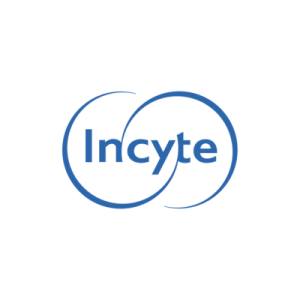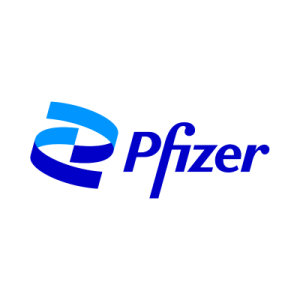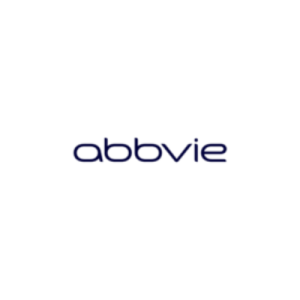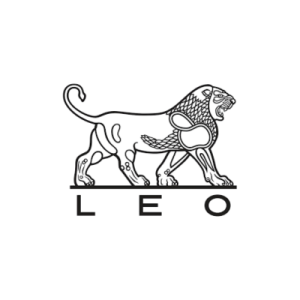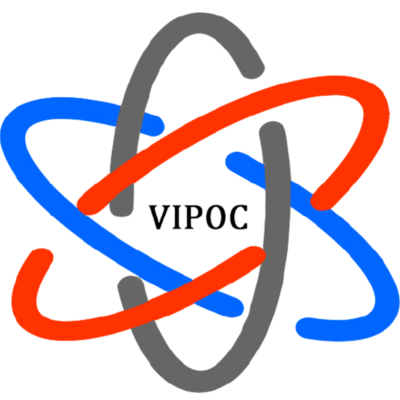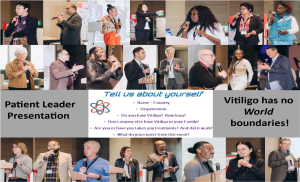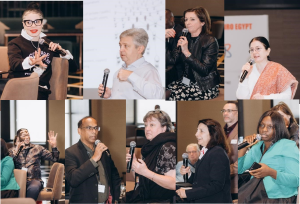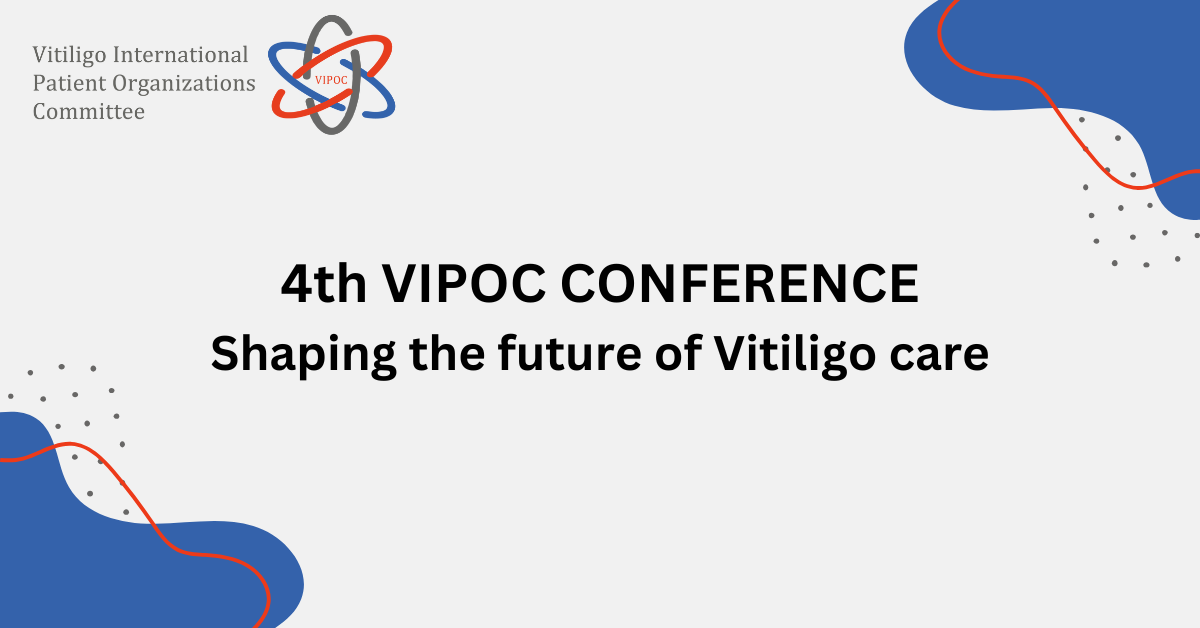
4th Edition of VIPOC: A Landmark Event for Vitiligo Advocacy and Collaboration:
From December 12 to 15, 2024, the 4th edition of the Vitiligo International Patient Organizations Conference (VIPOC) was held in Cairo, Egypt, marking its first-ever gathering on the African continent. This prestigious event brought together 40 participants from 25 countries, including representatives from Africa, South America, the United States, Canada, Europe, Asia, and the Caribbean. The conference underscored the importance of global collaboration and collective mobilization for vitiligo advocacy.
The presence of new members from diverse regions infused fresh perspectives and innovative approaches into the discussions. Through constructive exchanges, participants identified unique initiatives aimed at advancing the quality of life for individuals with vitiligo, fostering hope for concrete progress.
Key Highlights of the Event
 One of the most notable moments of the conference was the participation of Dr. Joseph Nsambi, Minister of Health of Haut-Katanga in the Democratic Republic of Congo. His dedication to addressing vitiligo in his country and his contributions to the discussions exemplified the significance of international cooperation in creating a better future for those affected by the condition.
One of the most notable moments of the conference was the participation of Dr. Joseph Nsambi, Minister of Health of Haut-Katanga in the Democratic Republic of Congo. His dedication to addressing vitiligo in his country and his contributions to the discussions exemplified the significance of international cooperation in creating a better future for those affected by the condition.
Simultaneously, the Vitiligo International Symposium (VIS) was held in Cairo, where leading scientists and dermatologists presented their latest research and engaged with VIPOC representatives. This exchange of insights and expertise was highly valued by attendees.
Jean-Marie Meurant, Vice-President of VIPOC, had the honours of addressing the VIS 2024 audience, where he presented an overview of VIPOC’s activities
Additionally, VIPOC members had the opportunity to engage with scientists during the VIS gala dinner, fostering open and meaningful discussions. To further strengthen connections, VIPOC organized a cocktail event, inviting VIS participants to network and exchange ideas with patients’ representatives.
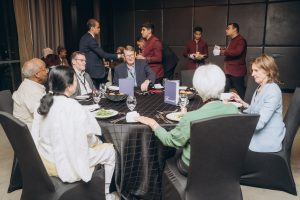

A special thanks to Pr Samia Esmat (Egypt) and Pr Marwa Abdallah (Egypt), our dear hosts who helped us to set up our conference alongside the VIS and welcomed us to the VIS meetings. Pr Henri Lim (USA), ILDS President (International League eof Dermatology Societies) was opening VIPOC cocktail event with our dear hosts and Jean-Marie Meurant (France). Pr Lim underlined the important role of the patient organizations as VIPOC working together with all dermatology societies for better care and cure for skin patients, as vitiligo sufferers.

No world boundaries for Vitiligo, No world boundaries for VIPOC!
Workshops and Initiatives
The workshops conducted during the 4th VIPOC conference provided a platform for participants to identify challenges, share innovative ideas, and propose actionable solutions in various critical areas.
Key outcomes included the following:
1. Mental Health and Psychological Support
- Mental health challenges, particularly acceptance of vitiligo, were identified as a major daily struggle for patients. The following initiatives were proposed to address these issues:
- Advocate for the integration of mental health support into vitiligo treatment protocols to ensure patients receive holistic care.
- Provide specialized training and information to psychologists, healthcare professionals, and patient organizations to better understand and address the unique psychological challenges associated with vitiligo.
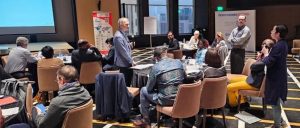
- Organize speaking groups with psychologists to create safe spaces for individuals to share their experiences and build resilience.
- Recognize the diversity of patient journeys, particularly in navigating identity loss due to depigmentation, and empower individuals to embrace their journeys through tailored support initiatives.
- Invite psychologists to future conferences to ensure mental health remains a core component of discussions and recommendations.
2. Advocacy and Awareness for Children and Youth:
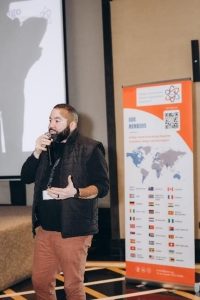 Vitiligo affects children in unique ways, particularly in school and family settings. The workshops outlined strategies to support young people and their families.
Vitiligo affects children in unique ways, particularly in school and family settings. The workshops outlined strategies to support young people and their families.
In Schools:
- Develop and distribute educational materials, such as videos, books, and brochures, to raise awareness among teachers and peers.
- Equip teachers with tools to address bullying and harassment sensitively, allowing children with vitiligo to talk about their condition openly.
- Engage young adults with vitiligo as speakers or mentors to inspire confidence and leadership in younger children.
In Families:
- Offer tailored information, advice, and workshops to help parents and siblings support family members with vitiligo effectively.
- Create special events for families to foster understanding and solidarity within the family unit.
- Launch platforms such as WhatsApp groups or Zoom meetings for parents, facilitated by psychologists and specialists, to provide ongoing support and advice.
3. Guidelines and Recommendations
 The 2023 publication of the “Worldwide Expert Recommendations for the Diagnosis and Management of Vitiligo” was a major step forward. Some VIPOC members participated in the writing of these new recommendations, giving the opportunity to include the burden and the psychological impacts of vitiligo, in this latest version.
The 2023 publication of the “Worldwide Expert Recommendations for the Diagnosis and Management of Vitiligo” was a major step forward. Some VIPOC members participated in the writing of these new recommendations, giving the opportunity to include the burden and the psychological impacts of vitiligo, in this latest version.
A quick survey among the participants showed that these recommendations are not available or even known in all countries. The noted several gaps in the dissemination and implementation:
- Raise awareness among doctors and dermatologists to ensure these guidelines are more widely adopted.
- Advocate for the development of a plain language version of the guidelines for patient organizations and individuals. This would empower patients to understand their condition and treatment better.
- Emphasize the inclusion of psychological impacts and patient perspectives in future updates to ensure holistic care recommendations.
4. Collaboration with Insurance Companies, Health administrations, and Social Security
The workshops highlighted the urgent need to engage with public and private insurance companies, health administration, and policy-makers globally to improve access to treatment for vitiligo:
- Campaign for vitiligo to be recognized as a chronic autoimmune disease, ensuring equitable access to treatments worldwide, not
just in Europe and the US.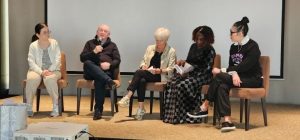
- Advocate for the inclusion of vitiligo treatment in health insurance coverage, emphasizing its impact on mental health, work, and social life.
- Identify and train spokespersons or lobbyists who can effectively engage with insurance companies, health authorities, and policymakers on behalf of patients.
- Encourage collaboration between physicians, patient organizations, and insurers to address the financial barriers faced by individuals unable to afford treatment.
5. Regional Summits and Support Groups
To strengthen local advocacy efforts, the workshops recommended the establishment of regional summits and support networks:
- Host regional meetings (Africa, Asia, Europe, USA, and the Caribbean) to facilitate collaboration and joint actions.
- Provide training programs for volunteers to help establish and manage local support groups effectively.
- Share knowledge and experiences among patient organizations to enhance their ability to secure funding and maintain independence.
6. Educational and Awareness Campaigns
The workshops stressed the need for comprehensive campaigns to educate patients, healthcare professionals, and the public:
- Collaborate with doctors, pharmaceutical companies, and policymakers to develop educational tools and awareness campaigns.
- Disseminate accurate and up-to-date scientific information through social media, websites, and online patient networks.
- Organize public awareness campaigns in all participating countries to dispel myths, reduce stigma, and increase understanding of vitiligo.
- Build an online support network for patients, providing easy access to resources, guidance, and community connections.
Scientific Advancements and Future Directions
The scientific discussions during the 4th VIPOC conference emphasized the progress being made in vitiligo research and treatment, while also addressing critical areas requiring further improvement. As highlighted by the speakers, “the revolution is underway, and the future is bright.” With promising advancements such as Opzelura (ruxolitinib cream) paving the way, new treatments and drugs are expected to become available soon. However, several key challenges must still be addressed to ensure equitable progress for vitiligo patients worldwide.
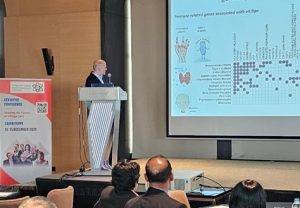 1. Establishing International Registries and Data Collection
1. Establishing International Registries and Data Collection
There is a pressing need for global registries to document the realities of living with vitiligo. These registries would provide essential data on:
- The burden of the disease, including its impact on quality of life, social and mental health, and financial well-being.
- Advocacy efforts to convince healthcare authorities and policymakers of the necessity of recognizing vitiligo as a chronic condition requiring comprehensive treatment.
- The allocation of resources for research, awareness, and treatment development.Such registries would create a foundation for international collaboration and strengthen the case for increased investment in vitiligo care.
2. Increasing Patient Participation in Clinical Trials
Patients’ involvement in clinical trials is crucial to advancing treatment options. However, many individuals remain unaware of opportunities to participate. The conference underscored the importance of:
- Utilizing patient support groups and organizations to inform and recruit participants for clinical trials.
- Ensuring transparency and accessibility in the trial process to build trust among patients.
- Expanding trials to include patients from diverse regions and backgrounds, making future treatments more inclusive and applicable globally.
- This approach will not only accelerate research but also empower patients by giving them an active role in shaping the future of treatment.
3. Strengthening Patient Expertise Through Surveys
Participants highlighted the critical role of Patient Advocacy Groups (PAGs) in gathering insights that reflect the lived experiences of individuals with vitiligo. Surveys can provide valuable data on:
- The challenges patients face in managing their condition.
- The psychosocial impacts of vitiligo on mental health, employment, and relationships.
- Preferences and feedback on existing and emerging treatment options.
- Patient input serves as a bridge between the scientific and patient communities, ensuring that research efforts align with the needs and realities of those affected.
4. Improving Shared Decision-Making Between Patients and Healthcare Providers
The lack of shared decision-making in vitiligo treatment remains a significant barrier. On the patient side, there is often limited knowledge about the condition and available treatments. On the healthcare provider side, insufficient awareness of the psychosocial burdens associated with vitiligo impacts the quality of care. Key recommendations included:
- Educating patients on the range of treatment options, enabling them to make informed decisions about their care.
- Training healthcare providers to recognize the psychological impacts of vitiligo and foster empathetic communication.
- Encouraging collaborative conversations between doctors and patients to develop personalized treatment plans.
- This approach will create a more holistic and patient-centered care model, addressing both physical and emotional needs.
5. Developing Consensus on Treatment Measurements
Establishing standardized guidelines for measuring treatment outcomes is essential to advance research and improve care. The conference emphasized the need to agree on:
- What to measure: Disease activity, progression, repigmentation, and quality of life.
- When to measure: Specific intervals during treatment or stages of disease progression.
- How to measure: Using validated tools and scales for assessing clinical and psychological outcomes.
- Standardized measurements would enable consistent comparisons across studies, improving the reliability of research and treatment protocols.
6. Promoting the Safe Use of Home Phototherapy Devices
With the increasing availability of home phototherapy devices, patients now have greater access to convenient treatment options. However, their safe and effective use requires:
- Regular follow-ups with healthcare providers to monitor progress and minimize risks.
- Comprehensive educational materials to guide patients on proper usage.
- Ensuring safety standards for these devices will help maximize their benefits while minimizing potential complications.
Thank you to all our speakers!
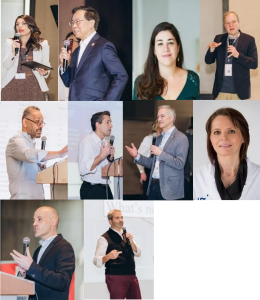 From left to right, top to bottom: Natalia Bogado (Germany), Henri Lim (USA), Stéphanie Chauvet (Switzerland), Markus Böhm (Germany) Khaled Ezzedine and Thierry Passeron (France), Albert Wolkerstorfer (Netherlands), Nanja Van Geel (Belgium), Julien Seneschal (France), John Harris (USA)
From left to right, top to bottom: Natalia Bogado (Germany), Henri Lim (USA), Stéphanie Chauvet (Switzerland), Markus Böhm (Germany) Khaled Ezzedine and Thierry Passeron (France), Albert Wolkerstorfer (Netherlands), Nanja Van Geel (Belgium), Julien Seneschal (France), John Harris (USA)
What’s next with VIPOC?
After eight years of impactful advocacy, with over 40 dedicated members, VIPOC stands at a pivotal moment in its journey. As an internationally recognized organization, its expertise is sought by leading researchers and medical professionals. This recognition highlights the power of collective action and collaboration, which has become the cornerstone of VIPOC’s success.
The organization now seeks to amplify its voice on the global stage, influencing policymakers through initiatives such as the Vitiligo White Paper and advocacy in international forums, including the European Union and the U.S. Senate and Capitol Hill. At the same time, VIPOC remains committed to supporting its members, particularly those who are isolated, unheard, or struggling to navigate their journey with vitiligo.
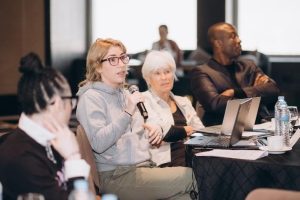
To sustain momentum and drive innovation, VIPOC is focusing on bringing new perspectives and ideas to its leadership, welcoming younger members to energize the organization. New members have already experienced the transformative impact of VIPOC’s expertise and have embraced the importance of creating and strengthening support networks worldwide.
Moving forward, VIPOC is committed to advancing its goals by offering training to representatives, fostering collaboration, and maintaining a steadfast dedication to advocacy. Equipped with global recognition, expertise, and emerging technologies, the organization is ready to influence decision-makers with conviction and evidence-based arguments.
The following themes were identified as key focus areas for VIPOC’s future initiatives:
- Mental Health and Psychological Support: Expanding resources and integration into care.
- Drug and New Treatment Information: Ensuring patients have access to the latest advancements.
- Clinical Trials Process: Increasing patient participation and awareness.
- Quarterly VIPOC Online Meetings: Strengthening member engagement and collaboration.
- Patient Advocacy Group Training: Building capacity and leadership skills.
- Guidelines and Recommendations for Vitiligo: Promoting accessibility and awareness globally.
- Support for New Patient Advocacy Groups: Assisting in their creation and development.
- Studies and Data for Advocacy Actions: Leveraging data to influence policies and decision-making.
- Collaboration and Mentorship Among Groups: Sharing expertise and resources across regions.
- Financing Patient Advocacy Groups: Identifying sustainable funding mechanisms to maintain independence.
This event could not have taken place without the participation of our sponsors.
Thank you very much for your unwavering support and your commitment towards vitiligo patients, all over the world.
